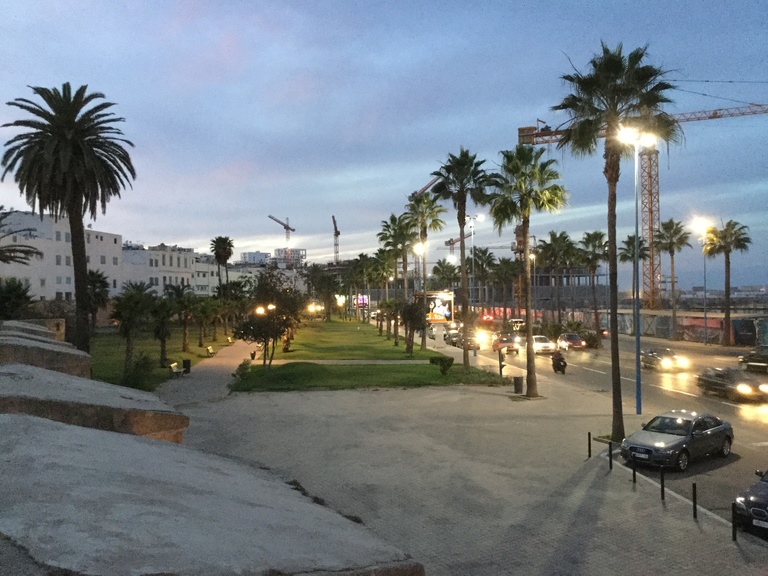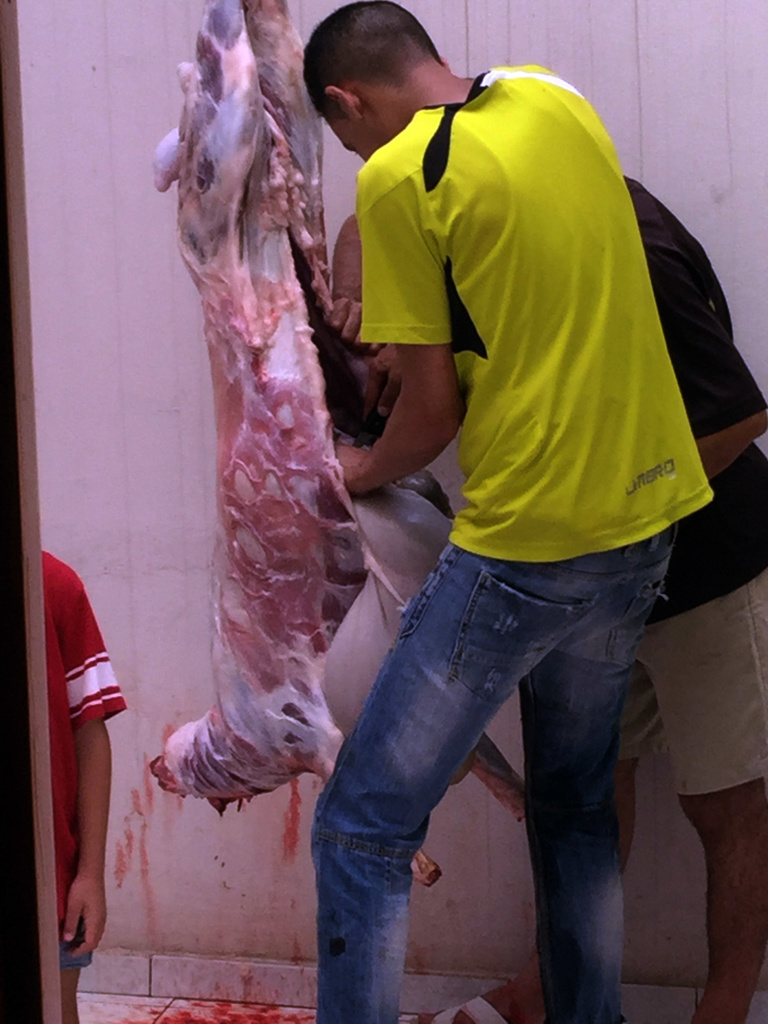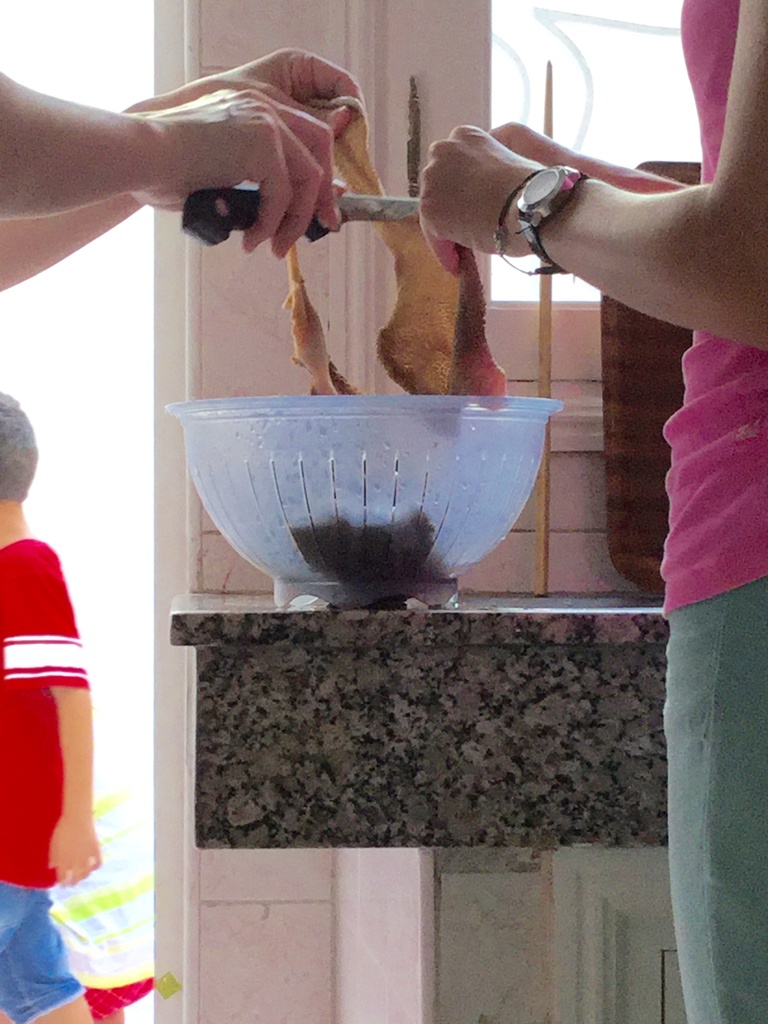By Claire Jacobson*

A view of the Atlantic coastline of Casablanca.
On Wednesday, September 23, I traveled from Ifrane to Casablanca (yes, that Casablanca, the one with a movie about it) with a friend to stay with her family for the long weekend of Eid el-Kibeer. You may be wondering, “What on earth is Eid el-Kibeer?”

The sacrificed sheep being eviscerated. That's the stomach they're pulling out.
Also known as Eid el-Adha, or, Festival of the Sacrifice, it’s a commemoration of Abraham’s almost-sacrifice of his son, Ishmael (Isaac in the Biblical version), before God stepped in and provided a ram as a substitute. The account is a celebration of the great faith of both Abraham and his son, and their radical obedience to God. During the Eid, which is the largest Muslim holiday of the year, Muslims all over the world sacrifice an animal (in Morocco, a sheep) to celebrate.
(Have I mentioned already how much I hate transliterating from Arabic letters to Roman ones? Because I do. Everything that is beautiful and poetic in Arabic starts to look ridiculous when I attempt to express it like this. It just doesn’t work. But I digress.)
Thursday morning, we all gathered with her uncle and his family to start the festivities. I mostly followed what was going on, since every so often someone would stop and translate into usually French and sometimes English for me. Traditionally, the king is first to sacrifice his sheep, then the local imams at neighborhood mosques, then everyone else.

The stomach now being cut apart to be cooked. The texture was weird, but it didn't taste that bad.
Having never seen an animal killed like this before, I was both curious and nervous to watch. All of the men participated, but it was the oldest of them who actually slit the sheep’s throat after saying a prayer to offer it to God. Honestly, it was slightly horrifying to watch the sheep slowly giving up on life in a pool of its own blood, but everyone took it in stride. Actually, I’m told the Muslim method of sacrifice is very humane, but I’m not used to watching it.
On the day of the Eid, the only part of the sheep eaten is the internal organs (I defy anyone who thinks they can beat me in a “what’s the weirdest thing you’ve ever eaten” contest now), but there was nothing on the table that I didn’t like.
There was sheep heart, stomach, intestine of both the regular cooked and turned-into-sausage varieties…I even had sheep brain at one point, although they wisely didn’t tell me that until after I’d eaten it. If I’d known, I might not have had the guts to try it (no pun intended). The rest of the meat was saved for the next day, when a proscribed amount was given away to neighbors and the poor and the rest was eaten or frozen. Mostly frozen. It was a lot of meat.
But the thing that left the greatest impression on me was not the killing of sheep– it was the Moroccan hospitality I experienced.
I’d heard that hospitality is one of the greatest virtues here, but I didn’t have any idea how much so. I don’t think my host family had more than thirty-six hours’ warning that they would be housing and feeding an extra person for three or four days, but they graciously welcomed me into their home. They fed me an immense amount of food (and mint tea, to aid and abet me in my addiction), and eagerly answered my questions and showed me around their city, and invited me to return and bring my family to visit.
I think I might take them up on that.
*Claire Jacobson is a 2018 sophomore from Iowa City, Iowa, majoring in French and Arabic with a certificate in writing at the University of Iowa. She is studying abroad this semester on the ISEP Al Akhawayn University program in Ifrane, Morocco.